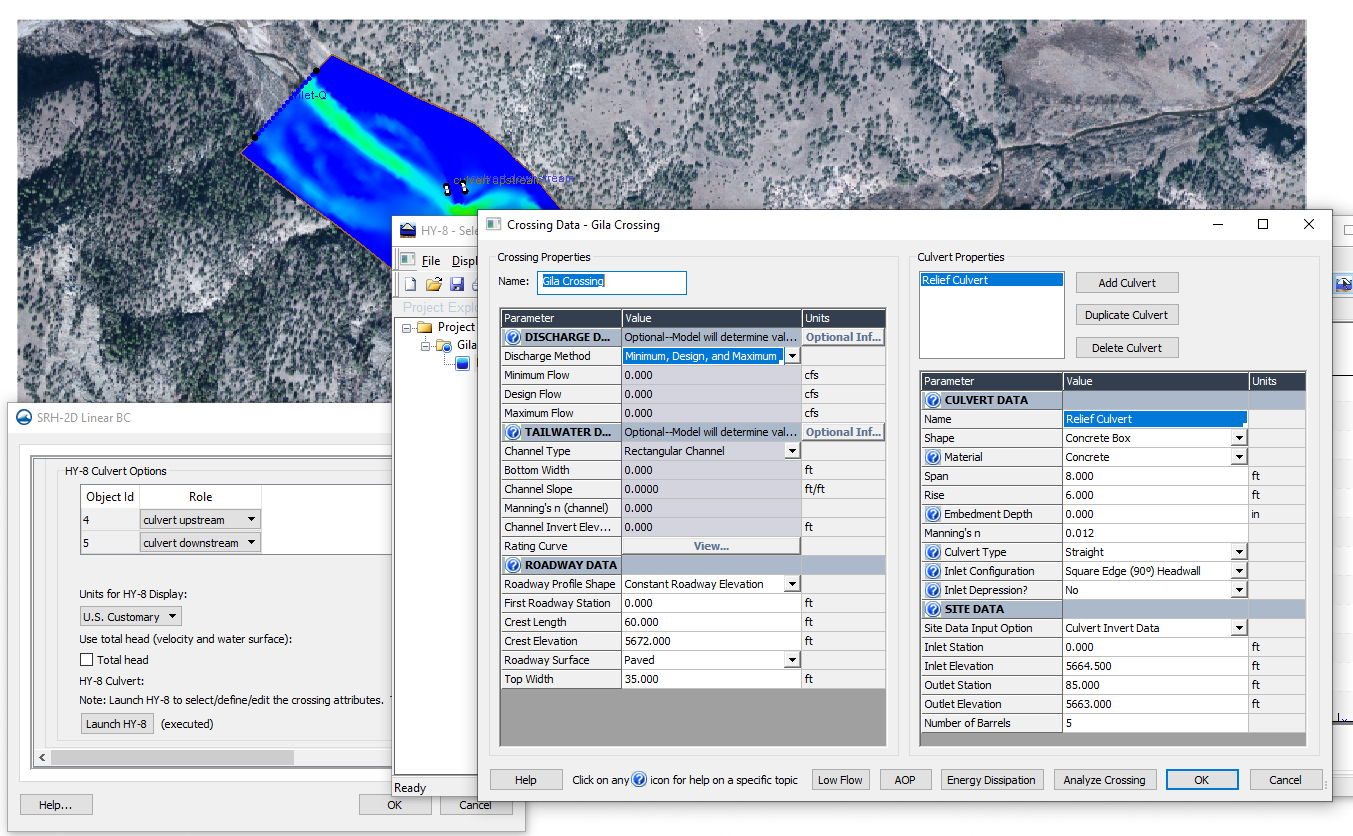We use cookies to make your experience better. To comply with the new e-Privacy directive, we need to ask for your consent to set the cookies. Learn more.
How SRH-2D and HY-8 Work Together
SMS allows using HY-8 to create culverts in SRH-2D models. HY-8 was created to model culvert profiles. When SRH-2D was being developed, structure boundary conditions were allowed to be linked HY-8 culverts to SRH-2D. Doing this permits SMS to make use of the more robust tools of HY-8 when designing culverts.
When designing a culvert for an SRH-2D model in SMS 13.0:
- Right-click on the SRH-2D BC coverage and open the HY-8 Options dialog.
- From the dialog, create the HY-8 file for the project.
- On the SRH-2D BC coverage, create two arcs for the culvert: one for the inlet side of the culvert and one for the outlet side.
- Select both arcs and open the SRH-2D Linear BC dialog.
- In the dialog, select the Culvert HY-8 option and launch HY-8 to connect the HY-8 file.
- In HY-8 design your culvert.

There are a few items to keep in mind when creating your culvert:
- Pay attention to where the culvert is located and how it snaps to the mesh in SMS. Designing your culvert for a location that doesn’t match up with your culvert is designed in HY-8 can cause discrepancies. Also, it helps to have the inflow entering the culvert at as close to a 90 degree angle as possible.
- Note that the crest length for constant elevation roadway profiles is the length between embankments.
- After the initial model run, the inflow values to the culvert may need to be adjusted and calibrated. If SRH-2D is showing lower or higher flow values, adjust the values in HY-8 as needed.
- Using a monitor line at the inlet or outlet side of the culvert. The results of the monitor lines may be different than what HY-8 reports. Use this difference to calibrate the model.
- 2D mesh elements are disabled between the culvert arcs during the model run.
HY-8 makes a great addition to SRH-2D in SMS. HY-8 is shipped with SMS, so feel free to try it out with your models today!
July 8, 2020
|
View: 422
|
Categories: SMS
|
By: <a class="mp-info" href="https://aquaveo.com/blog/author/admin">Aquaveo Staff</a>


